Video of the Week:
Overseeding Your Lawn
Turfgrass:
Power Raking and Core-Aeration
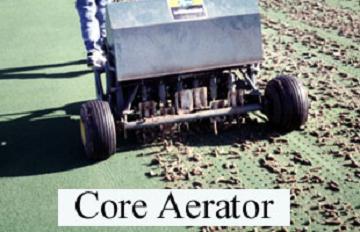
Power raking is primarily a thatch control operation. It can be excessively damaging to the turf if not done carefully. For lawns with one-half inch of thatch or less, I don’t recommend power raking but rather core aeration. For those who are unsure what thatch is, it is a springy layer of light-brown organic matter that resembles peat moss and is located above the soil but below the grass foliage. Power raking pulls up an incredible amount of material that then must be dealt with by composting or discarding.
Core-aeration is a much better practice for most lawns. By removing cores of soil, core-aeration relieves compaction, hastens thatch decomposition, and improves water, nutrient, and oxygen movement into the soil profile. This operation should be performed when the soil is just moist enough so that it crumbles easily when worked between the fingers. Enough passes should be made so that the holes are spaced about 2 to 3 inches apart. Ideally, the holes should penetrate 2.5 to 3 inches deep. The cores can be left on the lawn to decompose naturally (a process that usually takes two or three weeks, depending on soil-type), or they can be broken up with a power rake set just low enough to nick the cores, and then dragged with a section of chain-link fence or a steel doormat. The intermingling of soil and thatch is beneficial to the lawn. (Ward Upham)
Turf in Shade
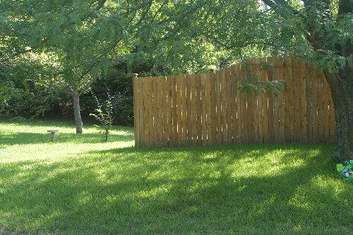
So, what should you do if you have too much shade for your turf? You have three choices. Reduce the shade by pruning up the lower branches of your trees so more early and late sun reaches the turf. This is not practical with many trees because it can destroy the desired shape. A second option is to plant a groundcover that is well-adapted to shady sites such as periwinkle or English ivy. Another solution would be to mulch the area under the tree. (Ward Upham)
Fruit:
Small Peaches
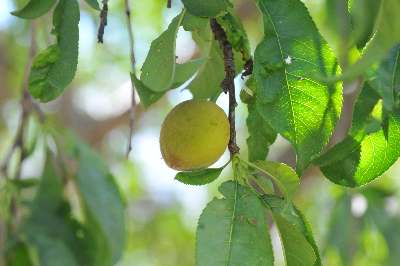
Peaches, like other fruit plants, must be vegetatively propagated. In other words, you cannot grow fruit from seed and expect the progeny to share the same characteristics as the parent. Therefore, good fruit trees have a top portion called the scion (the good fruiting part) and a bottom portion known as the rootstock. This combination is made by grafting or budding the scion onto the rootstock. Virtually everything above ground will be the scion and everything below ground will be the rootstock. The rootstock may keep the tree smaller, be more disease resistant than the scion, delay bloom or give some other good characteristic to the tree. However, the rootstock normally does not produce good, high quality fruit. Therefore, if the scion dies and the rootstock throws up new growth, the fruit produced will most likely be of poor quality.
How do you tell if the small fruit is due to a rootstock taking over? If the fruit produced is always poor quality, then suspect the rootstock problem. If this is the case, there is no remedy. The tree will not produce good quality fruit regardless of the care given. It would be best to remove and replace the tree. (Ward Upham)
Flowers:
Peonies May Be Cut Back Now
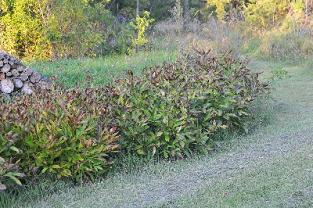
Ornamentals:
Spring Flowering Shrubs
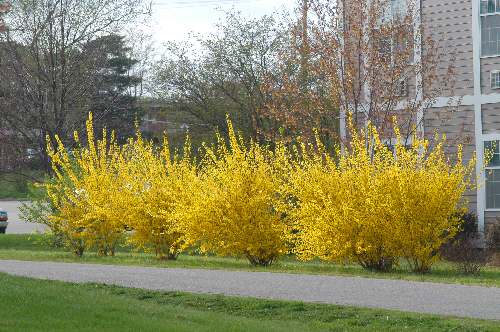
Mycosphaerella Leaf Spot on Ash
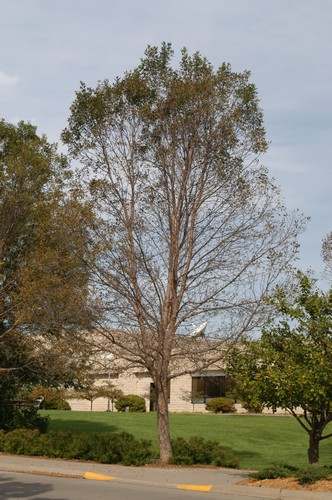
Mycosphaerella leaf spot causes small, brown spots that enlarge to become blotches and may result in early leaf drop. Though this disease looks serious, it is not. Defoliation this late in the growing season will not hurt the health of the tree. Therefore, because this disease appears sporadically and tree health is not harmed, we do not recommend treatment. Furthermore, treatment would have to be preventative and applied before the disease had infected the leaves. Applying a fungicide now would have no effect. (Ward Upham)
Pests:
Fall Webworm
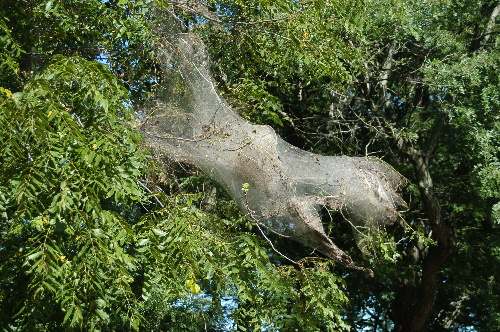
A common recommendation is to prune out webbed branches. One must consider the accessibility of web masses --- those beyond reach simply allowed to remain. Pruning might be doable if just a branch or two ---- but possibly unacceptable and disfiguring when trees are heavily infested with web masses.If within reach, consider an implement (of sorts) to “rake out”/remove webbing. And what implement could be more handy (yes, pun intended) than one’s own hand. There is no need to fear the dry webbing and/or dried fecal deposits and squirmy caterpillar within. As webbing is removed, also removed will be the objectionable dead/dry foliage and the fall webworms. Simply dispose of the gathered material. All that is left behind is the leafless (but still living) branch and its’ intact buds which will produce the ensuing year’s foliage. (Bob Bauernfeind)
Contributors: Ward Upham, Extension Associate; Bob Bauernfeind, Extension Entomologist
 RSS Feed
RSS Feed
